Ilocos Sur is the province in the western part of the Luzon, most populous island in the Philippines.
Vigan is the capital of the province.
It is a beautiful example of a Spanish colonial town in Asia as it showcases old churches and ancestral houses.
Ilocos Sur has a colourful cultural heritage with exciting tourist spots, centuries-old structures and unique dishes.
If you’re planning to visit Ilocos Sur though, check out these 16 attractions.
1. Vigan Heritage Village
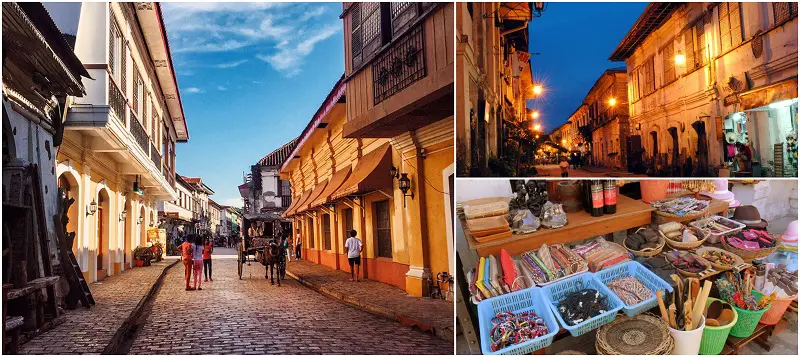
Vigan is among the oldest cities in the Philippines.
It is most famous for its Heritage Village and the Calle Crisologo street.
This historic centre dates back to the 16th century and it’s the best-preserved example of Spanish architecture in Asia.
Because of the unique blend of the Philippine’s and Spanish architecture, well-preserved Spanish monuments and rich cultural heritage it has been declared a UNESCO World Heritage Site.
The best way to enjoy the village and its cobblestone streets is riding “calesas” horse-drawn carriages or strolling among the beautiful colonial buildings.
Visit it early in the morning when numerous souvenir shops start to open, or in the evening when it gives off the 18th-century vibe.
2. Dancing Fountain at Plaza Salcedo

The Dancing Fountain is located right at the centre of the Plaza Salcedo.
There is a show starting every night at 7.30 pm.
Lasers and lights dance to music from around the world for about 30 minutes.
It is a perfect place to go and relax after a day spent strolling around.
However, expect crowds since the fountain is an ideal stop-over for the locals as well, and there is a limited place for sitting.
On the other side of the Plaza, there are sprouting fountains where kids usually play around.
3. Bantay Bell Tower
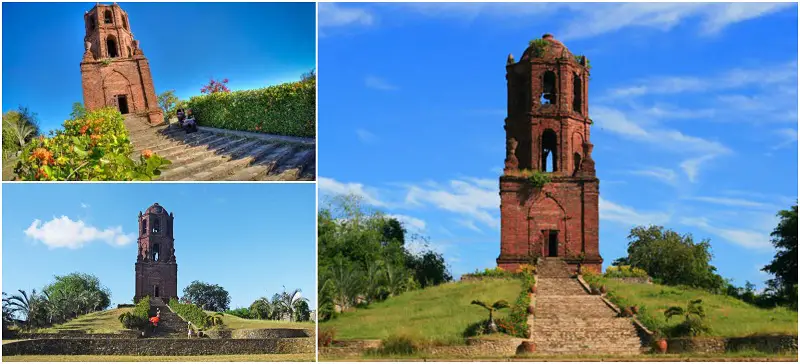
Bantay Bell Tower is the historic belfry of the St Augustine church in Bantay.
It is on a hilltop overlooking the province.
The belfry was once used as a lookout for invading enemy forces.
If you are looking for a postcard-perfect scenery, climb up the Bantay Bell Tower.
You’ll be greeted by a big old bell and breathtaking views at the top.
The belfry is guarded by a small gate which is locked when there are no visitors.
If you want to make sure you can enter, register at the Tourist Centre along Calle Crisologo at Vigan and ask for a tour in advance.
4. Baluarte Zoo
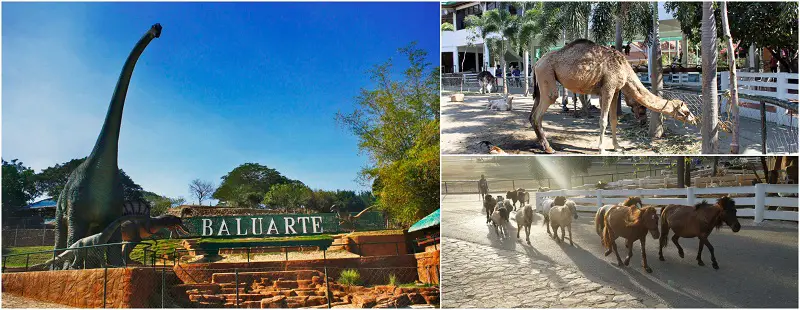
Just 10-minute drive away from Vigan City is the privately owned Baluarte Zoo.
Among caged animals, there are Bengal tigers, pythons, iguanas, camels, deer, as well as ostriches and flamingos.
Visitors can feed monkeys, swans, peacocks, and parrots.
Within the zoo, there is also a butterfly garden where you can admire thousands of butterflies and a track for horse riding.
The zoo is open every day, and the entrance is free.
Besides seeing the animals, you can also have a picnic lunch.
If you are travelling with kids, the Baluarte Zoo is something you shouldn’t miss visiting.
5. Archbishop’s Palace

The Archbishop’s Palace is next to the St Paul’s Metropolitan Cathedral in Vigan.
It is the only remaining 18th-century palace of this kind in the Philippines.
The residence of Archbishop of Nueva Segovia is in the palace, as well as a museum.
The museum has a collection of religious artefacts and relics from other churches around the region.
Make sure to ask for permission to visit the first floor where you can see numerous painting and learn something about each of the archbishops and bishops of the area.
You can get an entry ticket at some of the offices across the building.
6. Pagburnayan Jar Factory
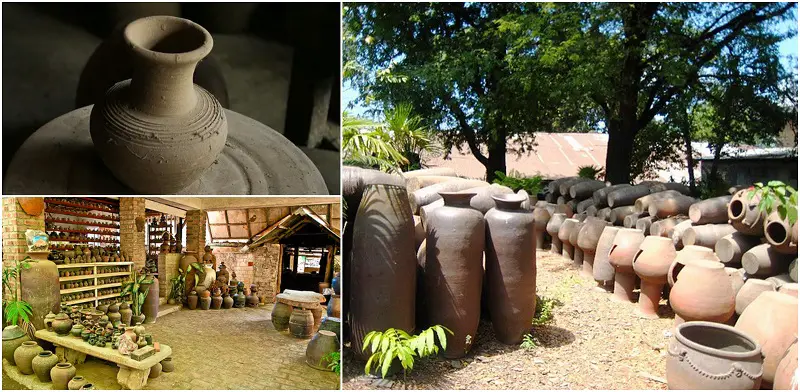
This jar factory is actually one of the few authentic jar makers in Vigan.
The name of this factory, Pagburnayan, refers to the hand-crafted pots.
It’s fascinating to watch how clay is transforming into pots.
The whole process will undoubtedly be interesting to kids, as well as adults.
You will also get the chance to try to make a pot yourself.
Beware, it’s not as easy at it looks.
Also, if you succeed, keep in mind that it will take a couple of days until it’s completely done.
7. Chapel by the Ruins
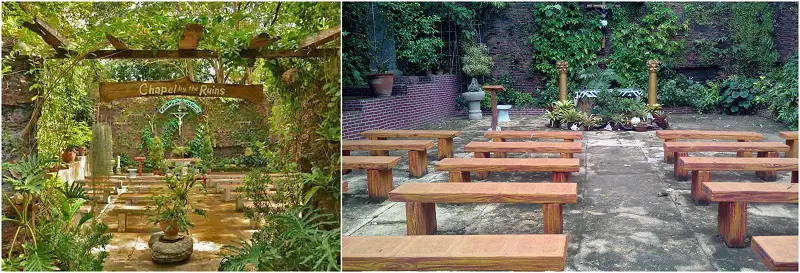
When you go at the back of the St Augustine Church, you’ll find a lovely garden, arranged like an open-air shrine.
It is Chapel by the Ruins, serene, peaceful and an ideal place for thinking or praying.
This garden-like chapel is what’s left of one wing of the St Augustine Church.
Locals claim that this was the place where priests were incarcerated during the 1763 revolt against Spaniards.
However, the ruins have been preserved and converted into the chapel.
8. Hidden Garden
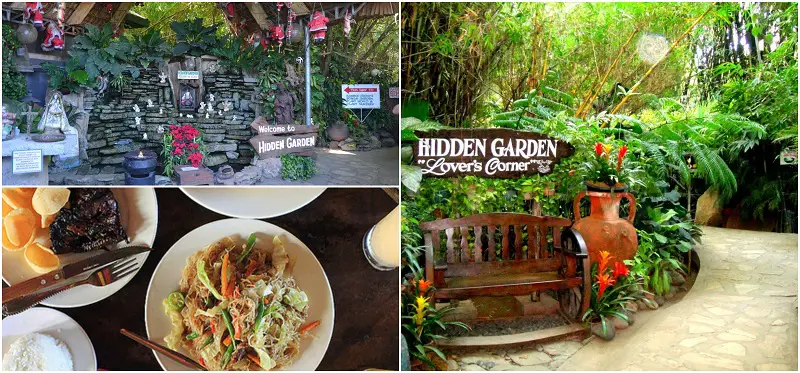
Although this place is outside of Vigan, it is still a must-see attraction.
You can get there by car or hiring a tricycle.
There are food stalls and a cafe, surrounded by a beautiful garden.
There is a vast variety of plants, and some of them are for sale.
You can stroll around the area, buy some plants or other souvenirs.
It’s a great place to relax and get a breath of fresh air.
If you decide to eat there, keep in mind that the menu consists of local dishes.
9. Plaza Burgos
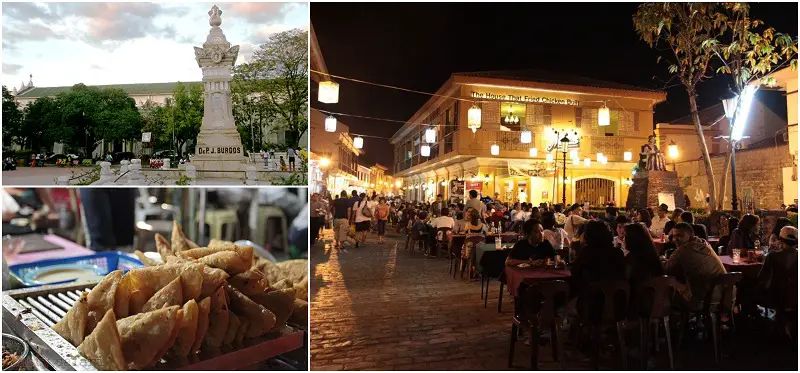
Plaza Burgos is one of the two major plazas in Vigan.
It was constructed in honour of Father Jose P Burgos.
He was executed with other clergy reformists due to his protests against inequality of Filipino priests.
Plaza Burgos is a local’s favourite hang-out place.
It’s an ideal location if you want to discover their way of life.
On its far end, you can find food stalls with local specialities including empanadas, their favourite snack.
You shouldn’t leave Vigan without trying the empanada in Plaza Burgos.
To make this gastronomic experience unforgettable, try okoy and the local ice-cream.
Around the square, you can also find various souvenir shops and buy other locally made crafts.
10. Santa Maria Church
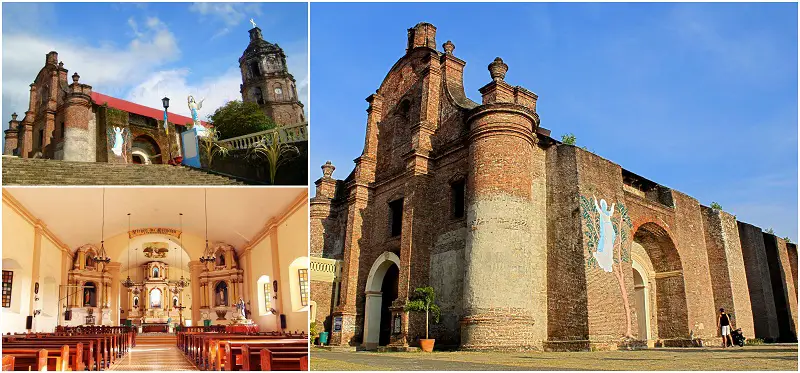
Santa Maria Church is officially known as The Church of Our Lady of the Assumption.
It is a UNESCO World Heritage Site as a part of the collection of four Baroque Churches in the Philippines.
In 1769, the picturesque church was built on the top of the hill overlooking the town of Santa Maria.
This massive baroque structure was not just a lookout, but a religious centre of the area as well.
It is also reminiscent of the four centuries of Spanish domination in the area.
However, unlike other churches in the region, it is surrounded by defensive walls like a fortress.
11. National Museum, Magsingal Branch
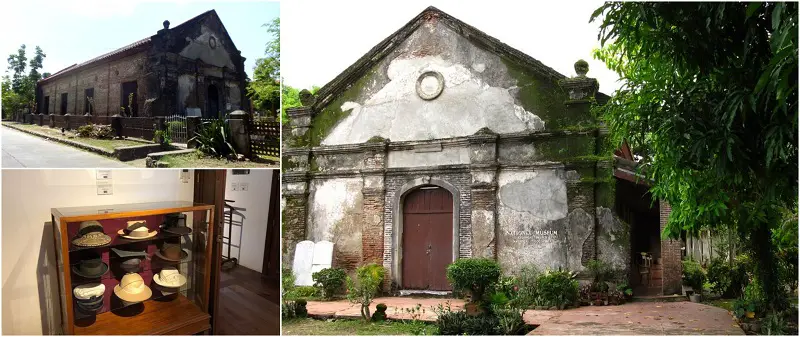
The museum was once a convent for a ruined church.
It was then upgraded to Magsingal Church before being transformed into a museum in 1982.
This is only a branch of the National Museum, and displays the material culture of the Northern Luzon.
You’ll also see a structure for drying tobacco leaves called “pugon”, and concrete wheel for making pottery jars.
It is about 10 kilometres away from Vigan.
12. St Augustine Church
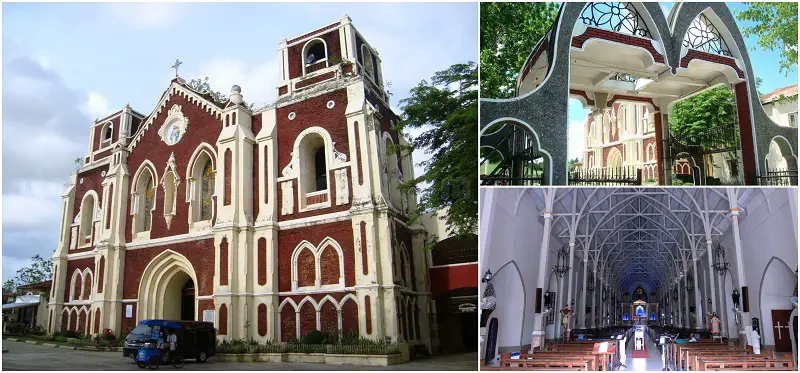
St Augustine Church is commonly known as Bantay Church or the Shrine of Our Lady of Charity.
It’s a Roman Catholic church, located in Bantay.
This is one of the oldest churches in Ilocos Sur, established at the end of the 16th century.
The exterior is mesmerising, however, inside the church much simpler in design.
At the back of the altar, you can find Virgin Mary crowned by the Pope as the patroness of Ilocandia.
Pilgrims often come to pray to the Lady.
13. Syquia Mansion
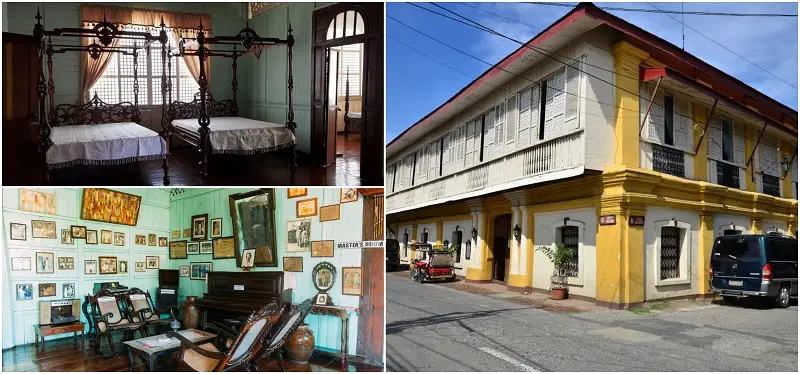
The Syquia Mansion was a home of the Philippines’ sixth president Elpidio Quirino and his family.
His wife’s family owned the mansion though.
The Syquia Mansion houses the president’s extensive memorabilia, and it is worth a visit.
Some of the historical and political gatherings took place here.
Marvel at huge rooms and look through the peeping holes used to observe visitors in the receiving area, before allowing them to enter the living room.
The mansion itself is another example of a hybrid of Spanish and Philippine’s architecture.
14. St Paul Metropolitan Cathedral
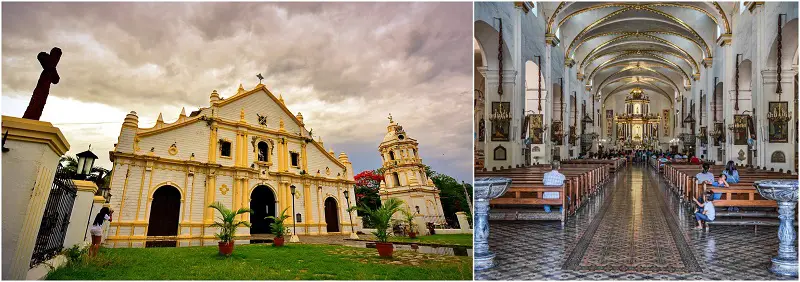
St Paul Metropolitan Cathedral is one of the major religious landmarks of the Philippines.
The original structure was made in 1574, but it was just a chapel then.
In 1641 the chapel was replaced by the church, but it was finally completed in 1800.
The cathedral was built in Baroque earthquake style, with strengthened thick walls and massive structure against earthquakes.
When you enter the cathedral, you can admire its interior, the silver-panelled main altar, 12 smaller altars and brass communion rails made in China.
You can also see Chinese characters where the rails connect to the building.
The cathedral’s octagonal design is supposedly rooted in feng shui principles.
St Paul Metropolitan Cathedral is close to Plaza Salcedo and Plaza Burgos.
15. Crisologo Museum
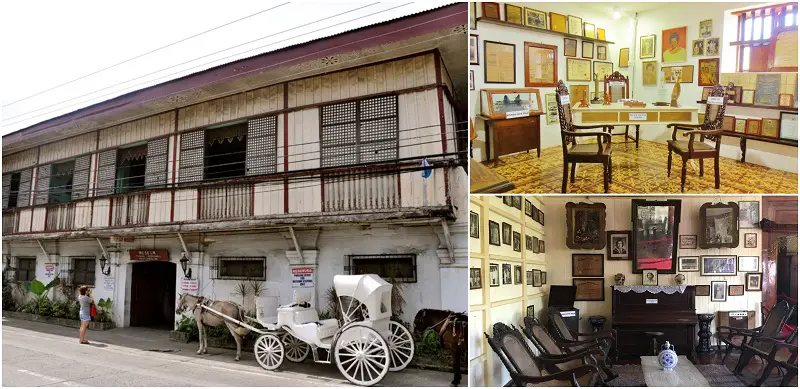
The Crisologo Museum is small but houses a lot of memorabilia, and antiques.
If you want to understand the political atmosphere in the Philippines in the ’70s, then this museum is a must.
Floro Crisologo was the congressman who was killed by an unidentified gunman inside the St Paul Cathedral.
To honour him, his family converted their century-old family mansion into a museum.
It gives you the opportunity to peek into the past.
You can see the antique carriage and an old car that are still being used as a movie prop.
Floro Crisologo’s wife survived an assassination attempt in them while being pregnant.
There is also a book collection, news clippings about Crisologo’s death, and even the clothes he wore when he was assassinated, covered in blood.
16. Padre Burgos House – National Museum
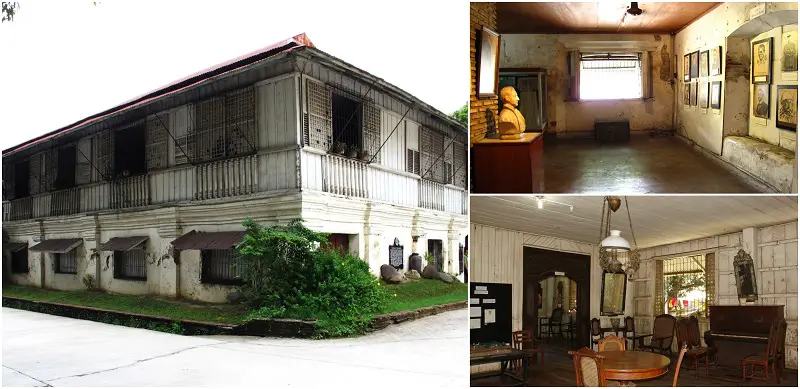
Padre Burgos House is a satellite of the National Museum, and one of the important historic buildings in Vigan.
As a young priest, Father or Padre Burgos fought for the equal rights for Philippine’s clergy.
However, he was executed by the Spanish in 1872 with two other martyr priests.
Father Burgos house is actually the old two-story house where he was born.
It is close to the St. Paul’s Metropolitan Cathedral, and it houses an extensive collection of his memorabilia, including photographs, old books and family antiques.
You can also enjoy the series of 14 paintings by Esteban Villanueva of the 1807 Basi Revolt.
Ilocos Sur is a region full of exciting attractions.
It’s like a door to the past, from cobblestone streets to factories that celebrate pottery making.
Historic buildings and an architectural blend of cultural elements from the Philippines and Spain will leave you speechless.
Take your time, and get to know Ilocos Sur, and don’t forget to buy some souvenirs.











